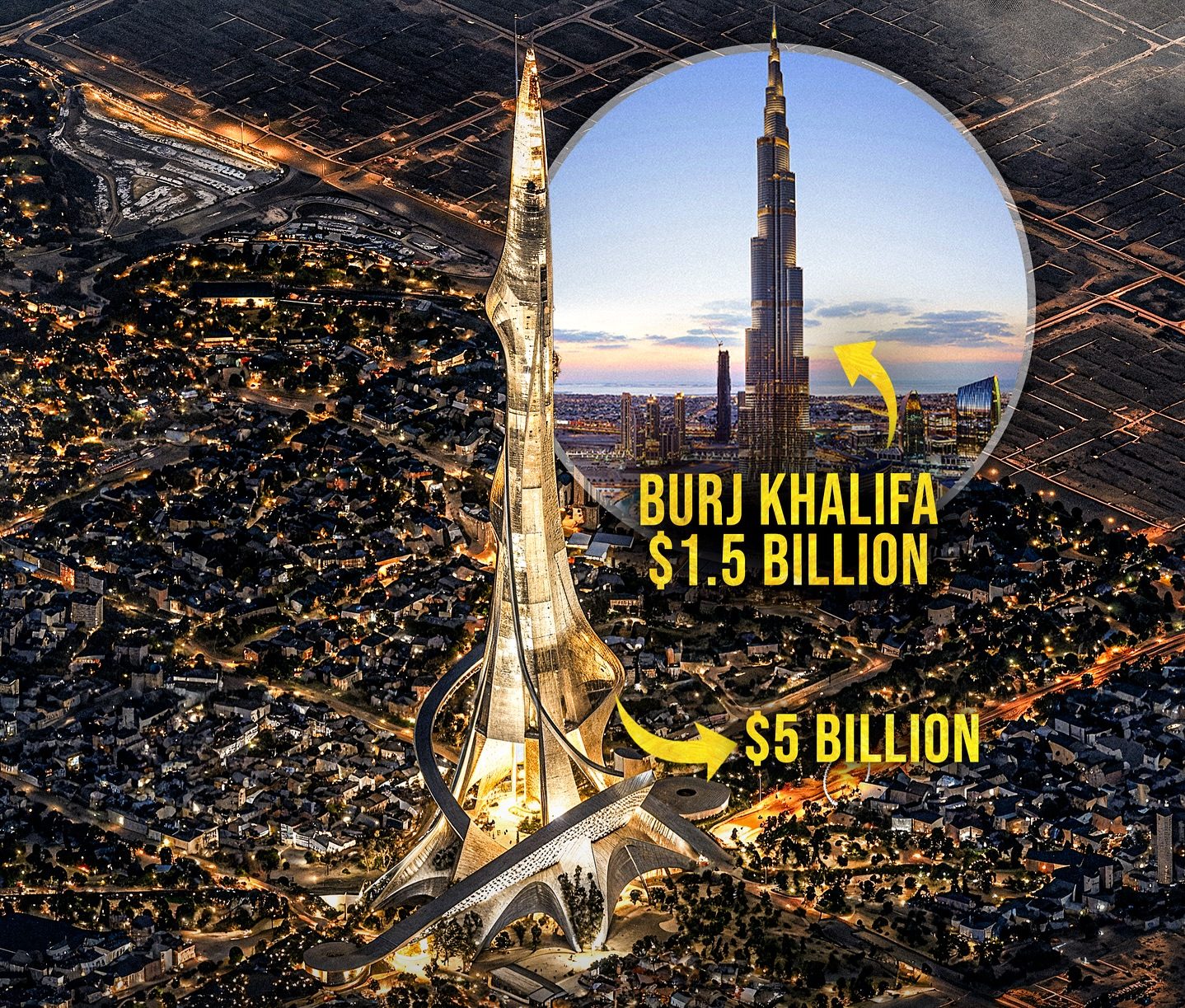Saudi Arabia’s $5 Billion Rise Tower Could Reach 6,562 Feet — Twice the Height of Dubai’s Burj Khalifa and the Tallest Structure Ever Built
In the heart of Saudi Arabia, an idea is rising that could redefine the very limits of architecture. Known as Rise Tower, the proposed skyscraper is expected to soar to an unbelievable 6,562 feet — around 2 kilometers tall — making it the tallest man-made structure in human history. If it moves forward, it will stand more than twice the height of Dubai’s Burj Khalifa, which currently holds the record at 2,717 feet.

The project is being advanced in north Riyadh under the direction of Saudi Arabia’s Public Investment Fund (PIF), the same powerhouse behind the country’s most ambitious urban developments, including NEOM and The Line. While still in the proposal stage, the Rise Tower is already creating global buzz, not just for its sheer scale but for what it symbolizes: a declaration of intent from a country determined to lead the next century of architectural innovation.
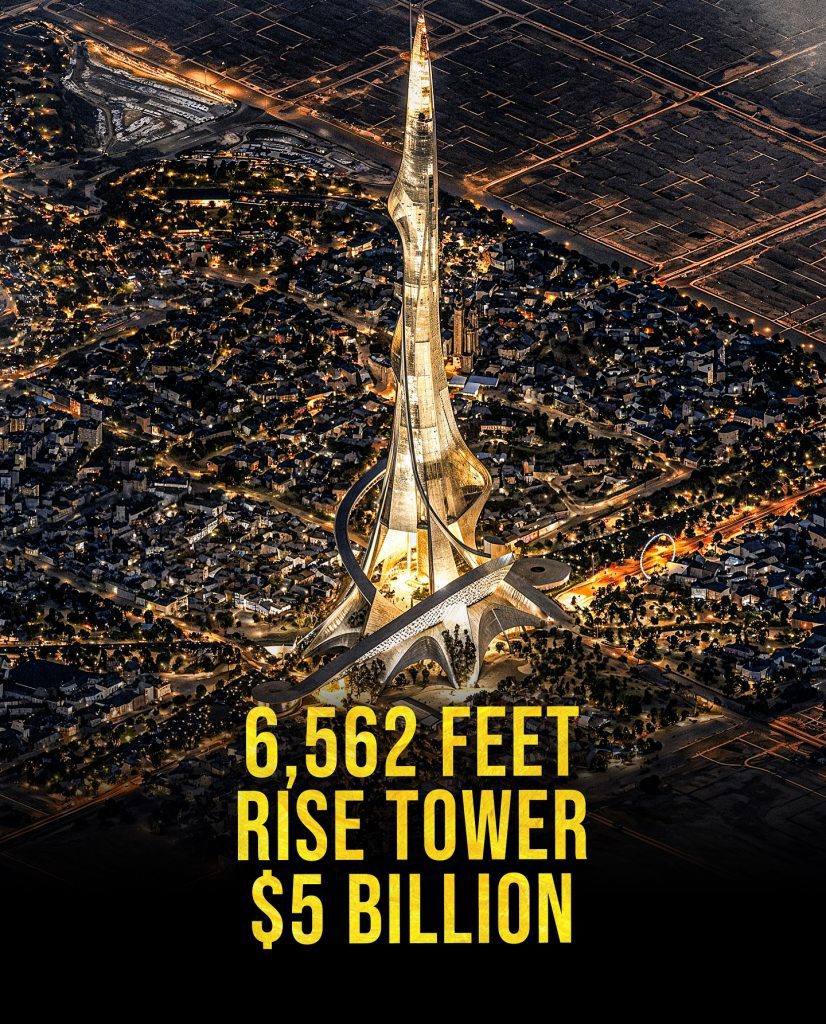
According to reports, the estimated budget for construction sits at around $5 billion. The government has begun inviting bids for the project, with early discussions suggesting that contracts could be finalized as soon as 2025. That number alone puts Rise Tower in a league of its own, but its scale and complexity push the boundaries of what’s considered possible in modern engineering. To imagine a structure nearly two kilometers tall is to imagine rethinking everything we know about wind resistance, foundation design, and even the way people live and work vertically.
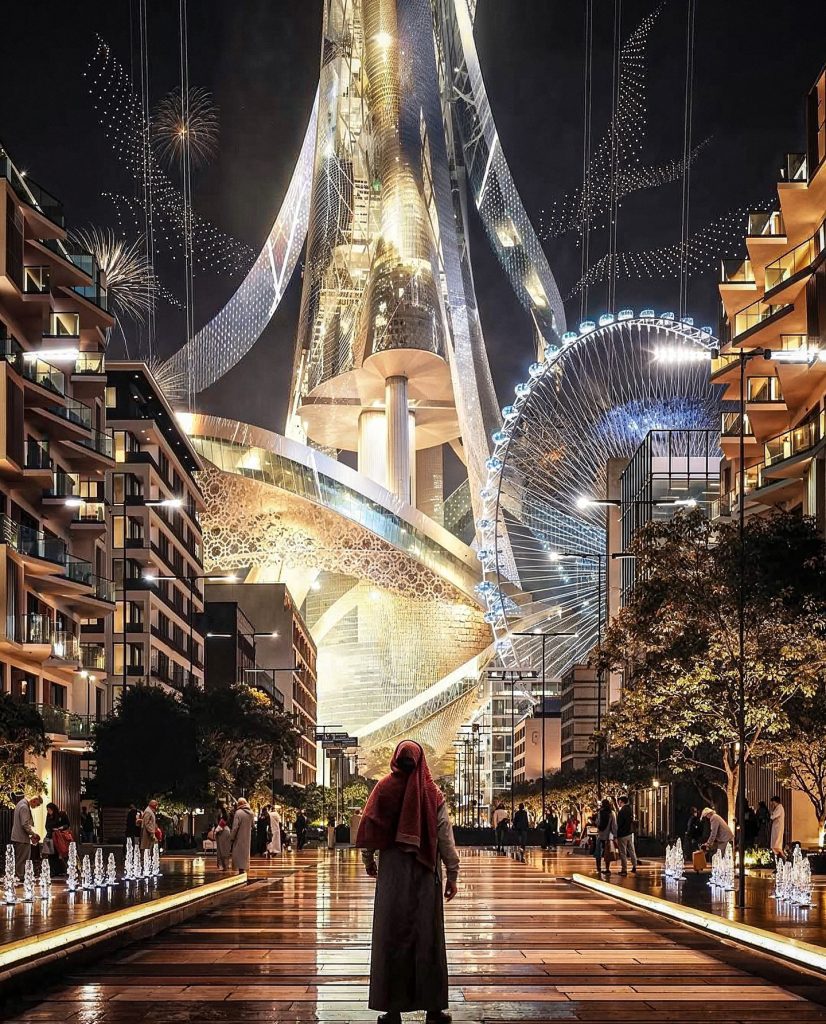
The proposed location — in the fast-developing northern corridor of Riyadh — aligns with Saudi Arabia’s Vision 2030, a national plan to diversify the economy and transform the Kingdom into a global hub for innovation, tourism, and sustainable urban design. The Rise Tower would not only become a physical centerpiece of this vision but also a powerful symbol of progress — an architectural beacon visible for miles across the desert.

Experts say the concept of a 2-kilometer skyscraper has been discussed for years, but no country has yet been able to realize it. The closest attempt came with the Jeddah Tower, another Saudi megaproject originally intended to reach about 3,281 feet. However, construction has faced repeated delays since 2018, leaving the Burj Khalifa in Dubai as the reigning champion of world skyscrapers. Rise Tower, if executed successfully, would not just break that record — it would shatter it.
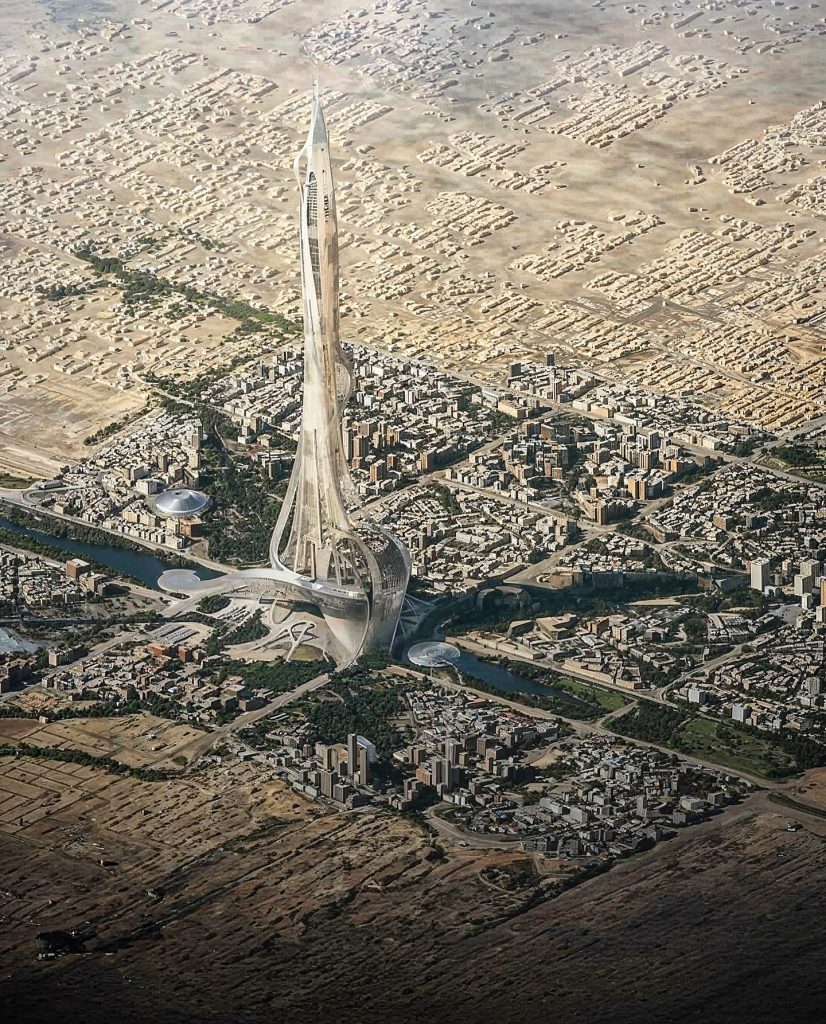
The scale of the project would also demand pioneering approaches to engineering and design. At 6,562 feet, Rise Tower would face unprecedented structural challenges: high-altitude wind forces, temperature variations, and the weight of materials all multiplying exponentially as the building climbs higher. Innovations in carbon-fiber composites, high-strength concrete, and new load-distribution methods would be essential. Even the elevator systems would require reimagining — traditional cables would be impractical at such a height, likely giving way to magnetic levitation or hybrid vertical transport systems similar to those being developed for futuristic megacities.

Beyond the engineering, there’s the question of how to make such a structure livable and sustainable. Sources close to early design discussions suggest Rise Tower would include a blend of residential apartments, luxury hotels, observation decks, green terraces, and even sky parks — self-contained environments that bring life to the skies. It would be more than a skyscraper; it would be a vertical city.
The design itself, still under wraps, has drawn early comparisons to conceptual renderings seen in global architectural competitions — fluid, aerodynamic shapes that blend art with science. If the visuals circulating online are anything to go by, Rise Tower would have a twisting, luminous form rising like a flame from the desert, an aesthetic echo of Saudi Arabia’s push to combine modernity with cultural identity.
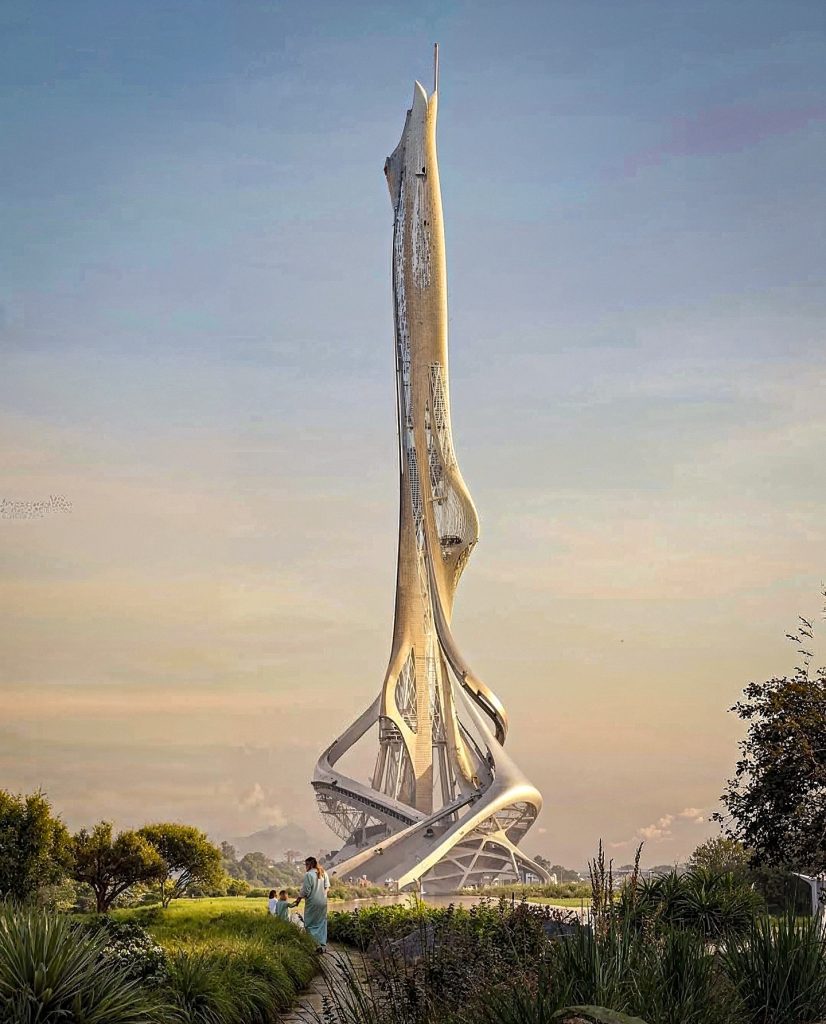
Building such a tower, however, isn’t just a matter of pride. It’s a massive economic statement. For Saudi Arabia, investing billions into this project sends a clear message: the future of urban life may no longer be horizontal. The kingdom is betting on vertical ambition as a core element of its modernization strategy. For global investors and developers, it’s an opportunity to participate in what could become one of the most iconic landmarks of the 21st century.
The comparison to Dubai’s Burj Khalifa is inevitable. When the Burj opened in 2010, it redefined what skyscrapers could be, stretching into the sky as a symbol of progress and power. Built at a cost of $1.5 billion, it became a magnet for tourism and global attention. Now, Saudi Arabia’s proposed Rise Tower aims to do the same — only on a scale that makes the Burj look modest by comparison.
Critics, however, have questioned whether the Rise Tower is feasible — both financially and logistically. Building in extreme desert climates brings unique challenges: temperature shifts between day and night can reach 40 degrees Fahrenheit, potentially affecting steel expansion and contraction. The higher the tower, the more such microfactors matter. Then there’s the question of occupancy — who would live or work 6,000 feet above ground? But these same questions were once asked about the world’s first skyscrapers, and history has shown that human ingenuity rarely stops at the limits of the familiar.

The project also aligns with Saudi Arabia’s push toward environmental innovation. Officials have hinted that Rise Tower would incorporate advanced energy systems — solar arrays, smart water recycling, and AI-driven building management. With sustainability now central to global architecture, a tower of this magnitude could set new benchmarks for clean construction and energy-efficient vertical ecosystems.
Globally, megastructures have always served as statements of identity. From the Eiffel Tower in Paris to the Empire State Building in New York, from the Shanghai Tower to the Burj Khalifa, each era’s tallest building has reflected its nation’s ambitions. The Rise Tower, in that sense, is more than a skyscraper; it’s a cultural statement about where Saudi Arabia sees itself in the next hundred years — not just part of the future, but leading it.
As the bidding process begins, the world watches closely. The engineering world is buzzing with anticipation, architecture firms are polishing their concepts, and investors are weighing the massive potential of such a landmark. For now, it remains an audacious dream — a $5 billion vision rising from the desert sands. But in Saudi Arabia, dreams of this scale are no longer fantasy; they are becoming a pattern.
If Rise Tower comes to life, it will redefine more than just the skyline — it will redefine the meaning of “tallest,” pushing the boundaries of what humanity can build when imagination and ambition meet technology. For a world always looking upward, Saudi Arabia might just be the next place everyone will have to look to see how high we can really go.

